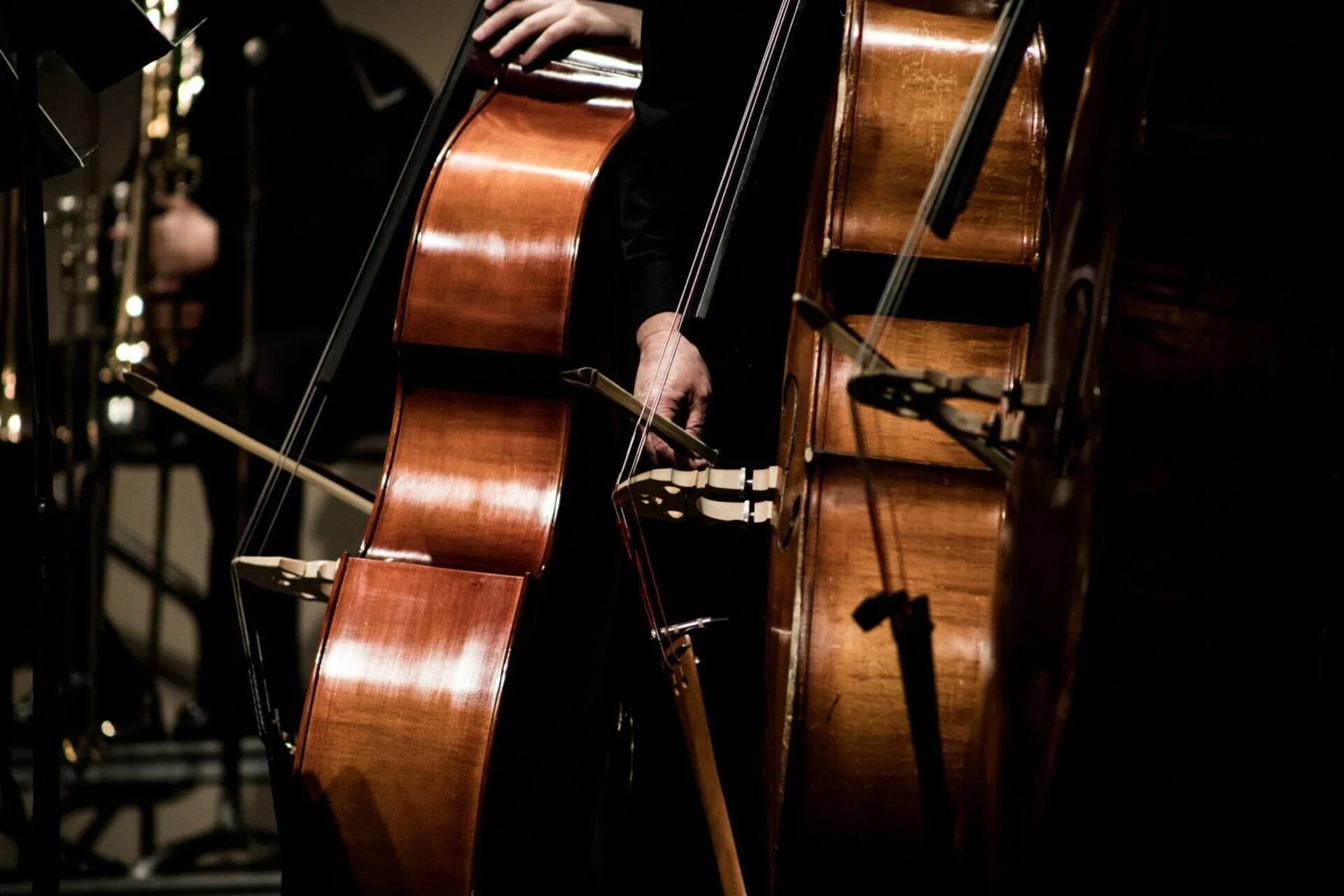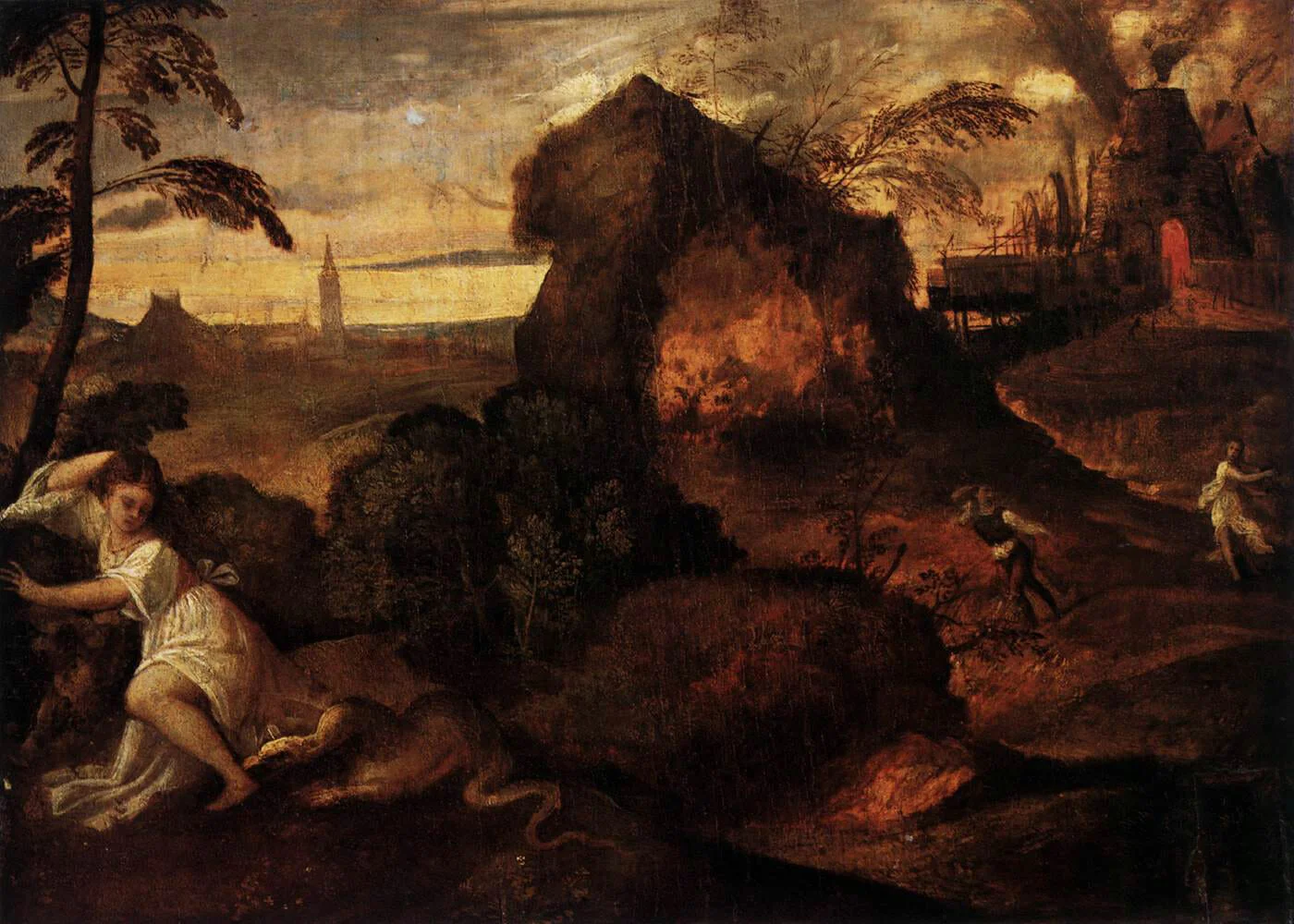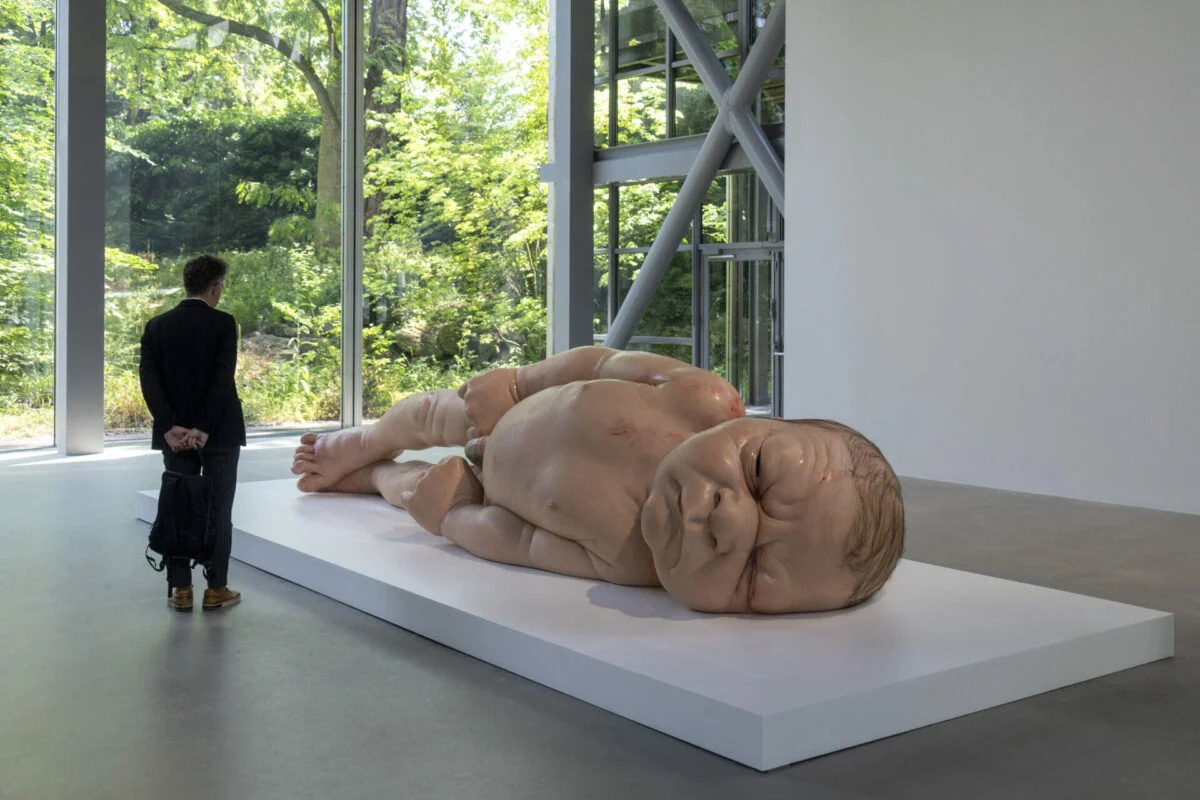
On Heritage Day (les Journées du Patrimoine) in France, citizens can visit national and European buildings that are usually closed to the general public or that are less accessible. On that occasion, many institutions and museums organize activities such as free guided tours. Amongst them, this year the Fondation Cartier for Contemporary Art welcomed visitors to discover their current exhibition in Paris on the most prominent artist of the hyperrealist movement, Ron Mueck, open until November 5th, 2023.
The public enters a space surrounded by stupefying sculptures that mirror the human body on a gargantuan scale at times and other times in miniature. The first contact with Ron Mueck’s work is a disconcerting mixture of wonder and nauseating feelings. The installation offers a physical and psychological experience that captivates the visitors. How can this encounter produce an internal conflict between attraction and repulsion towards an object of silicone and fiberglass? Some of the answers lie in the shapes of the object, which reflects the human condition, the place one occupies in the world, and one’s relationship with the other.
Ron Mueck, a figure in contemporary sculpture
Born in Melbourne in 1958 and living in the UK since 1986, Ron Mueck has developed a body of work that delves into universal themes, as it deals with concepts or concerns of interest to the human species, regardless of their background. On the technical side of the artistry, Mueck has profoundly renewed contemporary figurative sculpture. Succeeding traditional sculptures made out of raw material, like marble or bronze, he takes on the next step by using synthetic materials like silicone (plastic and rubber).
Ron Mueck started his career as a puppeteer maker for movies. In 1966, he turned to fine arts after being introduced to Charles Saatchi by his mother-in-law, another artist.
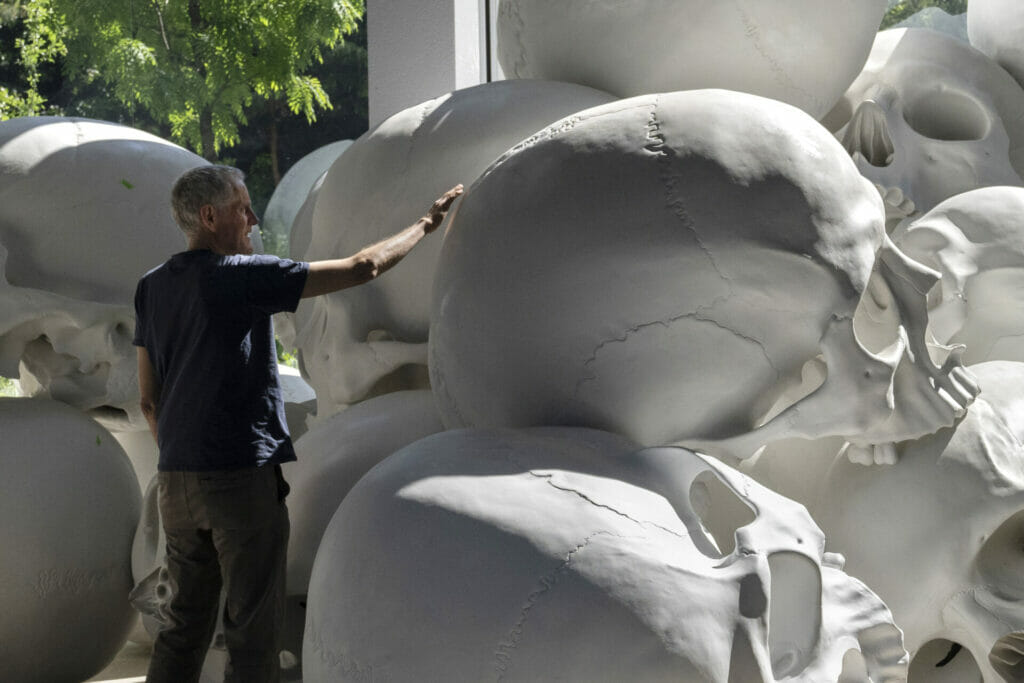
National Gallery of Victoria, Melbourne, Felton Bequest, 2018
Photo © Michel Slomka / MYOP / Lument
Hyperrealism: a tool to explore the workings of the mind and body
Hyperrealism is a new art form that emerged in the late ’60s. The art creates convincing illusions based on the simulation of reality, the digital photograph. However, the artists go beyond strict photographic resemblance. They add unexisting details or some that cannot be seen in the human eye. Moreover, it is not a literal reproduction as it will incorporate emotional, social, and cultural thematic.
Hyperrealism offers the means to explore the relationships one carries with oneself and with the world. For this reason, hyperrealists depict humans through various lenses, ranging from the social-political to the psychological, exploring the internal or the external workings of the mind and body. Here, Mueck explores the events that are markers of human experience, from the first moment to the last, and the traces left behind by human existence.
In the nexus between life and death
Arriving at one of the main rooms, with the installation of A Girl (2006), viewers are confronted with the physical birth. The larger-than-life newborn, freshly delivered, seems to open her eyes for the first time. By its size, the audience is reminded of an action that is nothing short of a miracle. However, there is something horrendous about seeing an infant displayed in public in the middle of a white sterilized room. Because this precious moment is usually shared in intimacy. Moreover, it throws back to the beginning of every human being. Unbathed and unpolished, it is a disgracious yet raw reflection. As viewers walk closer under her gaze, the neonate also represents an uncorrupted witness to their actions and an allegory to justice.
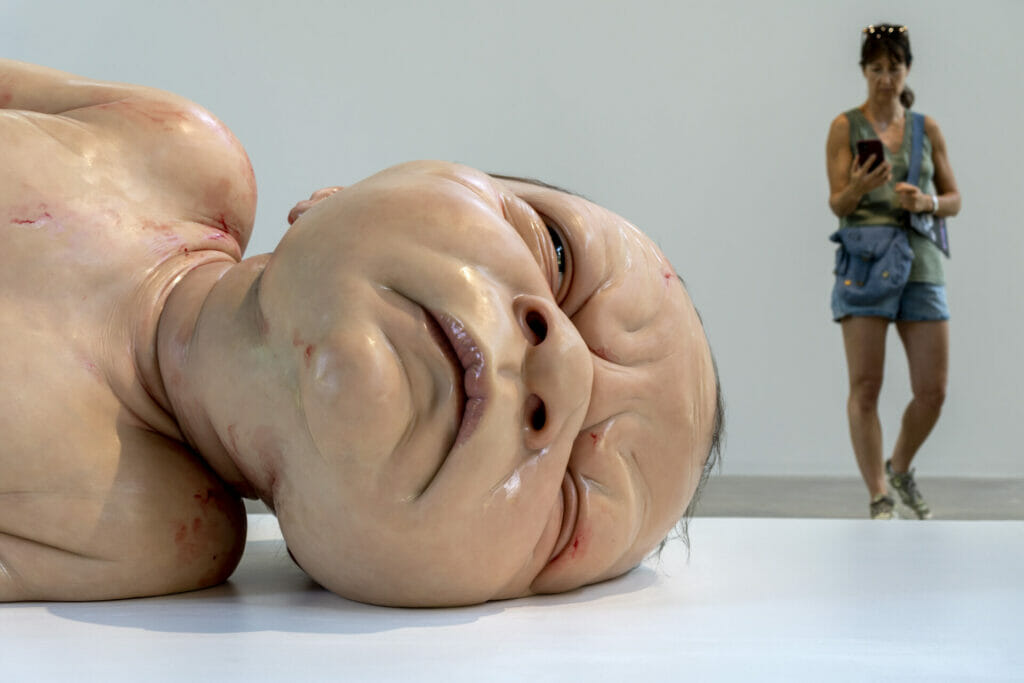
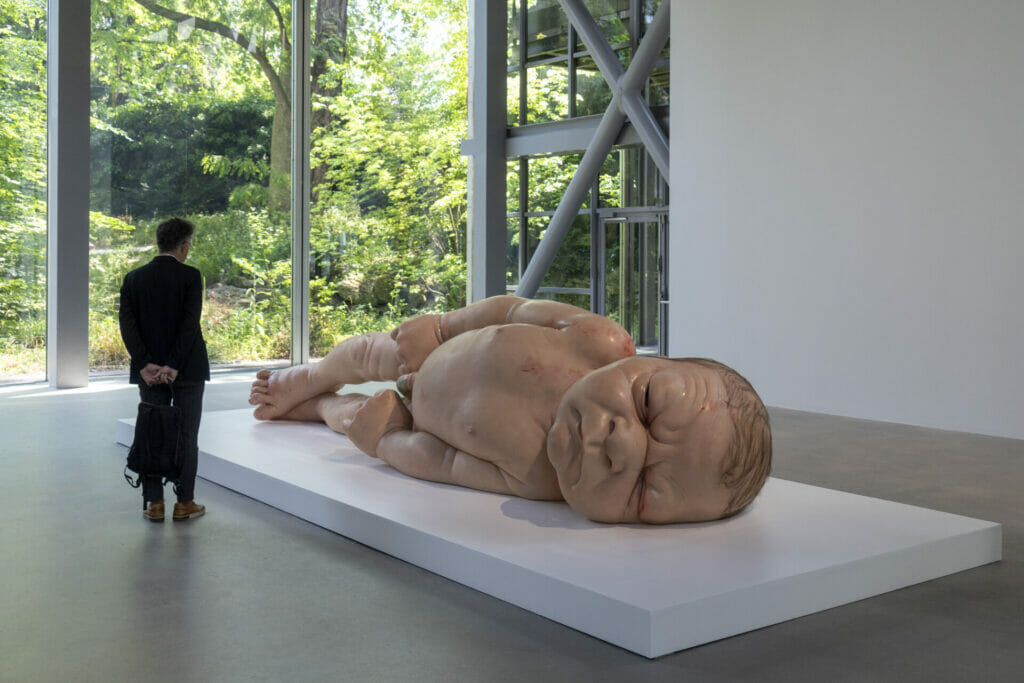
Mixed Media. 110,5 x 501 x 134,5
Scottish National Gallery of Modern Art, Edimbourg
Photo © Marc Domage
In the other room, an installation catches the attention of passersby from the street. They see a multitude of stacked, gigantic white skulls through the glass walls. Commissioned by the National Gallery of Victoria (Melbourne, Australia) in 2017, Mass comprises one hundred giant human skulls reconfigured by the artist for each venue. The multiple meanings of the word “mass”, weight, chaotic bundle, or religious ceremony glimpse at the diverse possible interpretation. The viewers make their way through what could seem to be the remnants of a battleground or a cemetery of ancient humans. Mass (2017) is the centerpiece of the exhibition and represents a milestone in the artist’s career. It marks the expression of his desire to embrace new ways of sculpting. In this way, Ron Mueck exposes his memento mori, reminding that every moment since birth, one is dying.
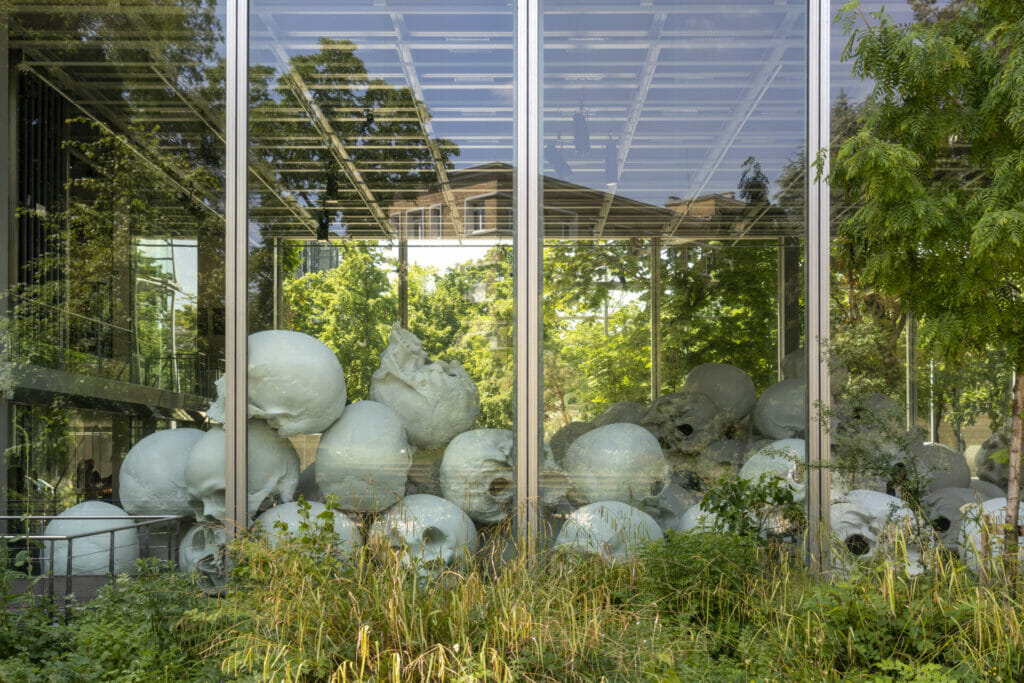

National Gallery of Victoria, Melbourne, Felton Bequest, 2018
Photo © Marc Domage
Ron Mueck’s methods and approach
Most of Mueck’s precedent sculptures, such as A Girl (2006) or Man in a Boat (2022), are gigantic or miniature sculptures showing humans in their individuality. Mueck models them from clay. First as a preliminary small maquette, then made in a full-sized clay sculpture. Then, he casts it into fiberglass and models the silicone, diverging from the traditional casting process in bronze. He crafts his models with techniques acquired in his previous career as a special effects artist.
Then there is his new work, some presented specifically for the exhibition at Fondation Cartier, for which Mueck used new materials and techniques. For instance, En Garde (2023), he did the dogs using new technology such as 3D printing. With This Little Piggy (2023), the audience can witness the work in process, as the sculptures are made with a material that makes it still moldable. These latest artworks reveal a new approach to his representation of bodies. He broadens the subject matter to explore groups with dynamic tensions and movement. Complex forms and rhythms enhance movements that shift as the viewers walk around the grouped figures.

Mixed media. Courtesy Thaddaeus Ropac
Photo © Marc Domage
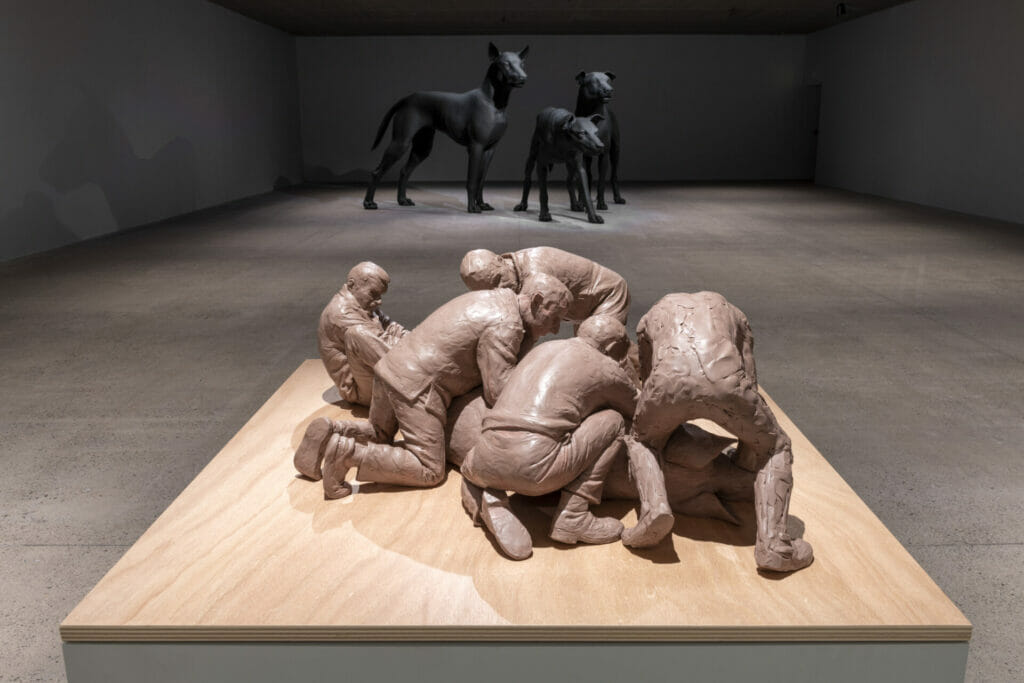
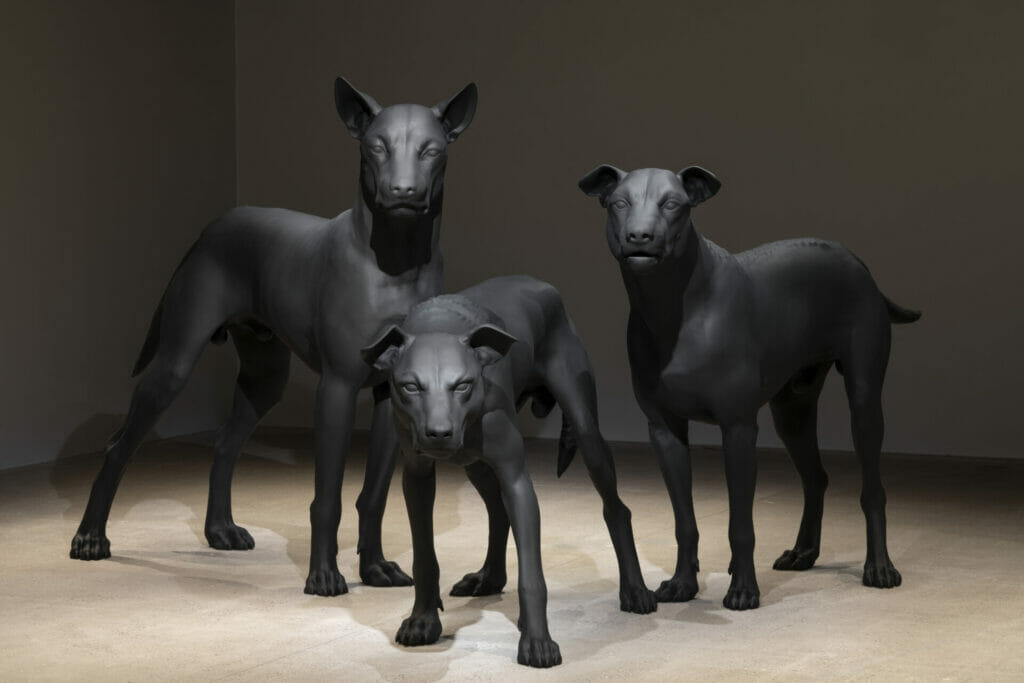
Courtesy Thaddaeus Ropac
Variable dimensions
Photo © Marc Domage
A comparison of Mueck’s with other bodies in art
The Italian Renaissance sculpture David by Michelangelo Buonarroti is also a colossal statue with a height of 5.7 meters, often considered the epitome of classical beauty. Here, the scale magnifies the naked virility. Moreover, David, a character in the Bible, is represented before his combat with Goliath. His attitude shows contained and controlled violence prepared for the attack, enhancing virtues sought by the Florentin people. In his contrapposto pose, he is a Renaissance interpretation of a common ancient Greek theme of the heroic male nude. Thus, the subject matter is “noble”.
In contrast, the sculptures of Ron Mueck are “vulgar” nobodies, depicting your everyday stranger standing defenseless. Closer to the feminine representation of the vulva, L’Origine du Monde, by the painter Gustave Courbet, Ron Mueck’s work questions the general understanding of the human body, embedded in a specific culture of a place in time. It plays with the fine line distinguishing revered natural beauty from the concealed and the profane. Indeed, Mueck’s sculptures are bodies in vulnerable positions yet presented theatrically. Imposing, they force the audience to talk about taboos, to reveal them, to strip themselves of artifice and lay themselves naked.
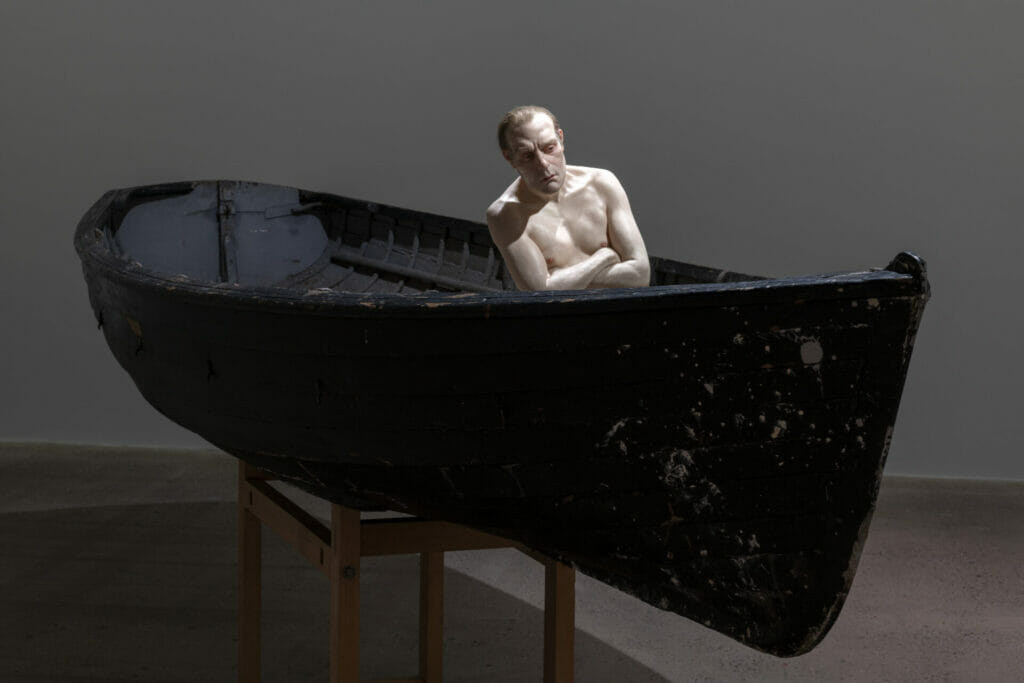
Mixed media, 159 × 138 × 425,5 cm.
Private Collection.
Photo © Thomas Salva / Lumento.
Discussing the further limitations of the body
Going further, Patricia Piccinini is another artist playing with hyperrealistic production of the body but with a twist, as she adds fantastical elements to her sculptures. For instance, the project Graham is a collaboration between car crash experts, doctors, and the artist Piccinini. Together, they produced a figure representing what the human body would need to evolve into to be able to survive car accidents, and thus expose the vulnerability of the human body.
Where to see Ron Mueck’s work?
The French people can appreciate Ron Mueck’s artwork at the Fondation Cartier for Contemporary Art until November 5th, 2023. It will be held next at Triennale Milano from December 2023 to March 2024 in the framework of the partnership between the Fondation Cartier and the Milanese institution.




